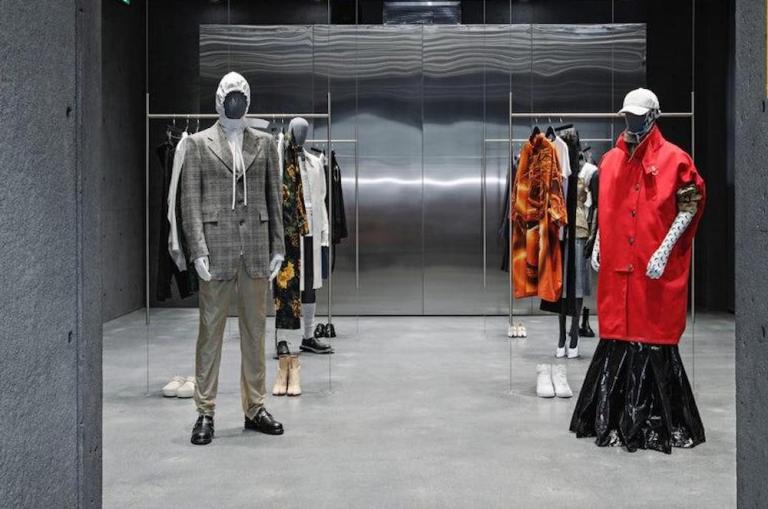
When most people consider a “buy online, pick up in store” arrangement, they’ve already made the purchase when they arrive to collect their item. However, for SSENSE (pronounced essence), at its first retail location, the Canadian eCommerce brand turned physical retailer has opted for a slightly different flavor. When customers pick their items online, the items are transported to the physical store for the shopper and lined up, ready to go on a personal rack for the customer when they arrive.
“We’ve realized that this is how a lot of people want to shop,” SSENSE Founder Rami Atallah said. “It’s physically impossible to put 20,000 different styles into one space, but now people can select what they want from the comfort of their own home and, when they get to the space, everything is already ready for them.”
It’s a somewhat non-traditional approach, but SSENSE has a somewhat non-conventional take on how it brings fashion to the masses — eschewing the sort of high-end and low-end distinctions that have historical bisected commerce. Instead SSENSE has leaked out a name and reputation for itself by offering innovative — and often unusual — looks to its shoppers that blend high-end designer labels with what is coming in streetwear.
In its 15-years of operation, clicking on one fashion item will often show it presented with merchandise from other brands — a different design choice than the typical retailer method of showing customers outfits a head-to-toe design by one label. Moreover, clothes aren’t quite promoted on the SSENSE site the way they are elsewhere. In an inverse of the adage “clothes make the man,” SSENSE uses the man (or woman) to make the clothes — presenting profiles of wearers who also happen to be, well, cool. Musicians, artists and chefs are among those who have been profiled on the site — and who fashion sense has been offered up to buyers.
“Millennials don’t see distinctions between fashion, music, content and commerce,” said Krishna Nikhil, SSENSE’s chief merchandising officer told The Wall Street Journal (WSJ). The majority of SSENSE’s customer base is between the ages of 18 and 34, Nikhil said, and what they’ve affirmed over and over is that they aren’t looking for the prepackaging that has dominated fashion curation. Customers like seeing mixed styles and “connected with” with the SSENSE approach “very strongly.”
“SSENSE is the first place I check for anything.” Toronto stylist Matthew Godin told the WSJ. “SSENSE has a really great mix of high-end, contemporary and emerging designers. They also do a really great job at styling looks together in a really non-traditional way.”
That approach has followed the brand into its physical hub in Montreal, where buyers are likely to see streetwear-brands like A-COLD-WALL* alongside Givenchy wear. The goal, according to its founder, is to find showcase designers who have different perspectives and who “aren’t playing by the book.” That’s because “the book” isn’t working as well for luxury retailers as it has in the past, and labels that aren’t adapting to the up-and-coming generation of consumers run the risk of being left behind.
Traditional luxury houses, according to the SSENSE brand philosophy, aren’t reaching the right consumers with their content — and, in some cases, just aren’t getting it. Consumers don’t just want shopping destinations that have the brand, but places that offer a better overall experience, from the curation of the clothes to the smoothness of the transaction. And it is an idea from which bigger brands are beginning to borrow.
Bloomingdale’s, for example, has redesigned its site to emphasize storytelling, curation and more commentary on trends, as opposed to just showcasing goods. The goal is to create more engagement with consumers, especially younger ones.
“We have incorporated more editorial content created for the millennial customer,” said Frank Berman, Bloomingdale’s executive vice president and chief marketing officer, told the WSJ. “In addition, we have been actively acquiring a younger consumer through advanced targeting on digital social platforms, such as Instagram and curated influencer programs.”
The question, of course, is not just if other brands will do it, but if they will do it well. That’s because SSENSE does it well — and, for over a decade and a half, has developed a reputation for it. It’s easy to want to do what they do — but it remains to be seen just how much that may be replicable.